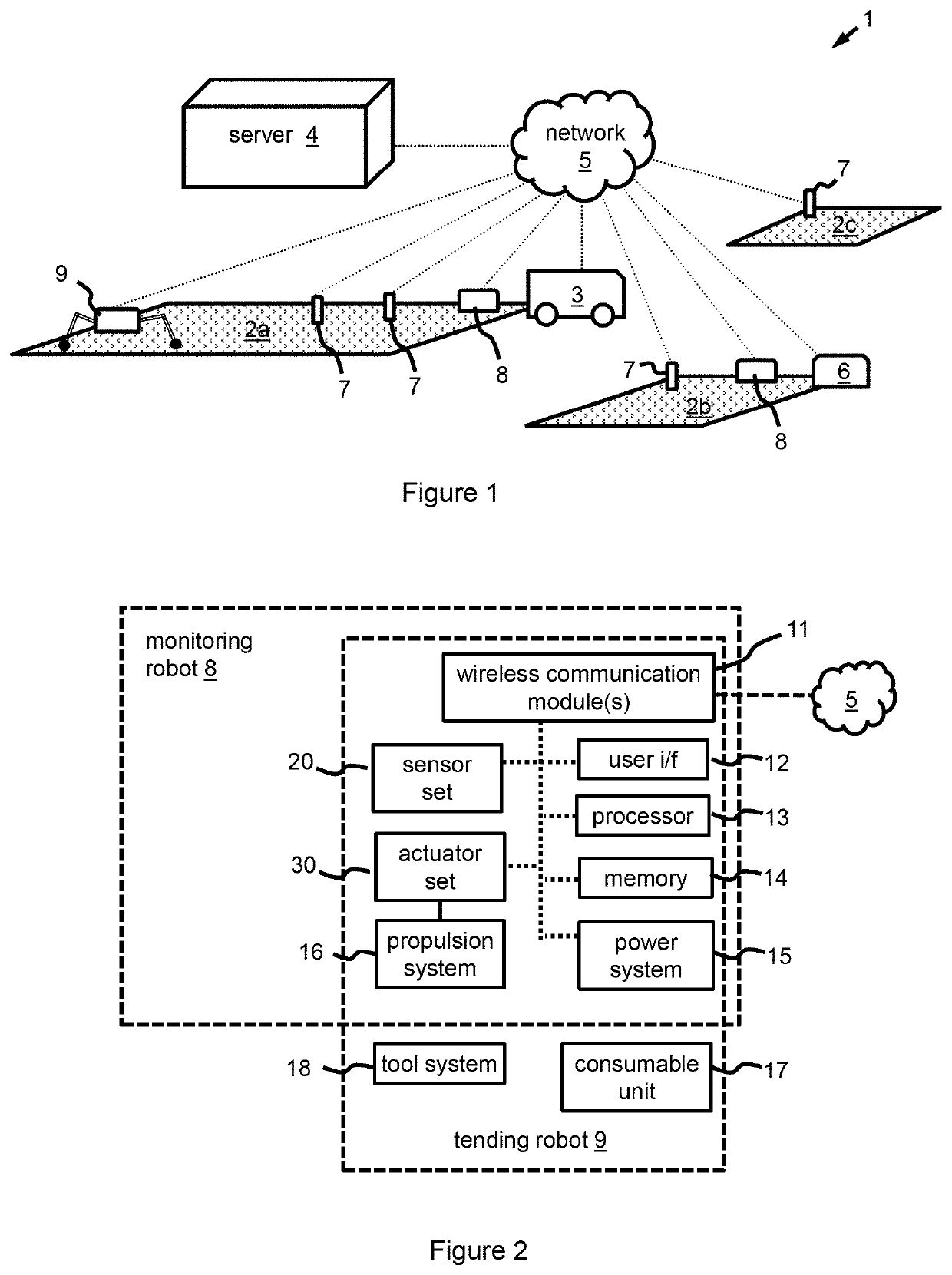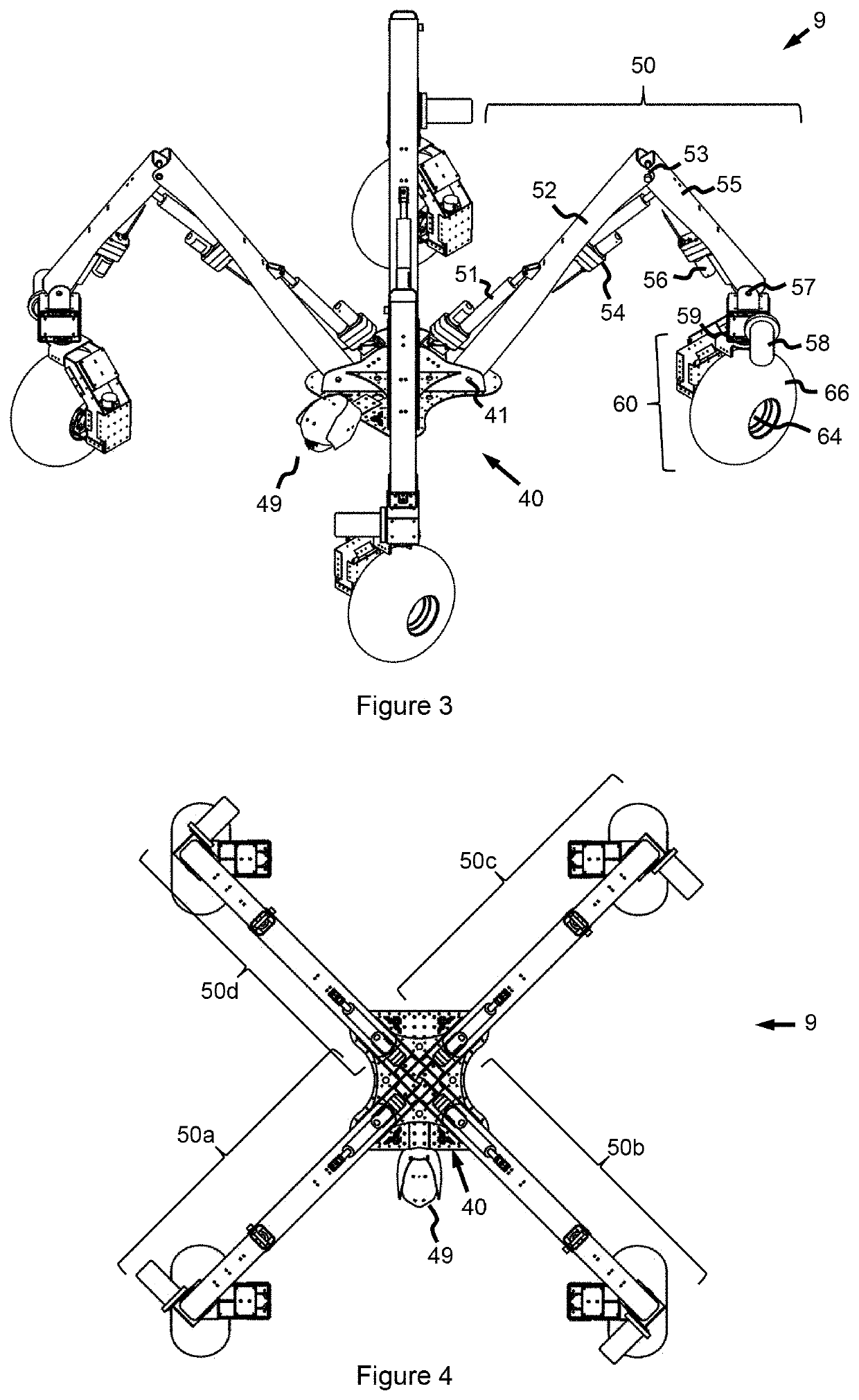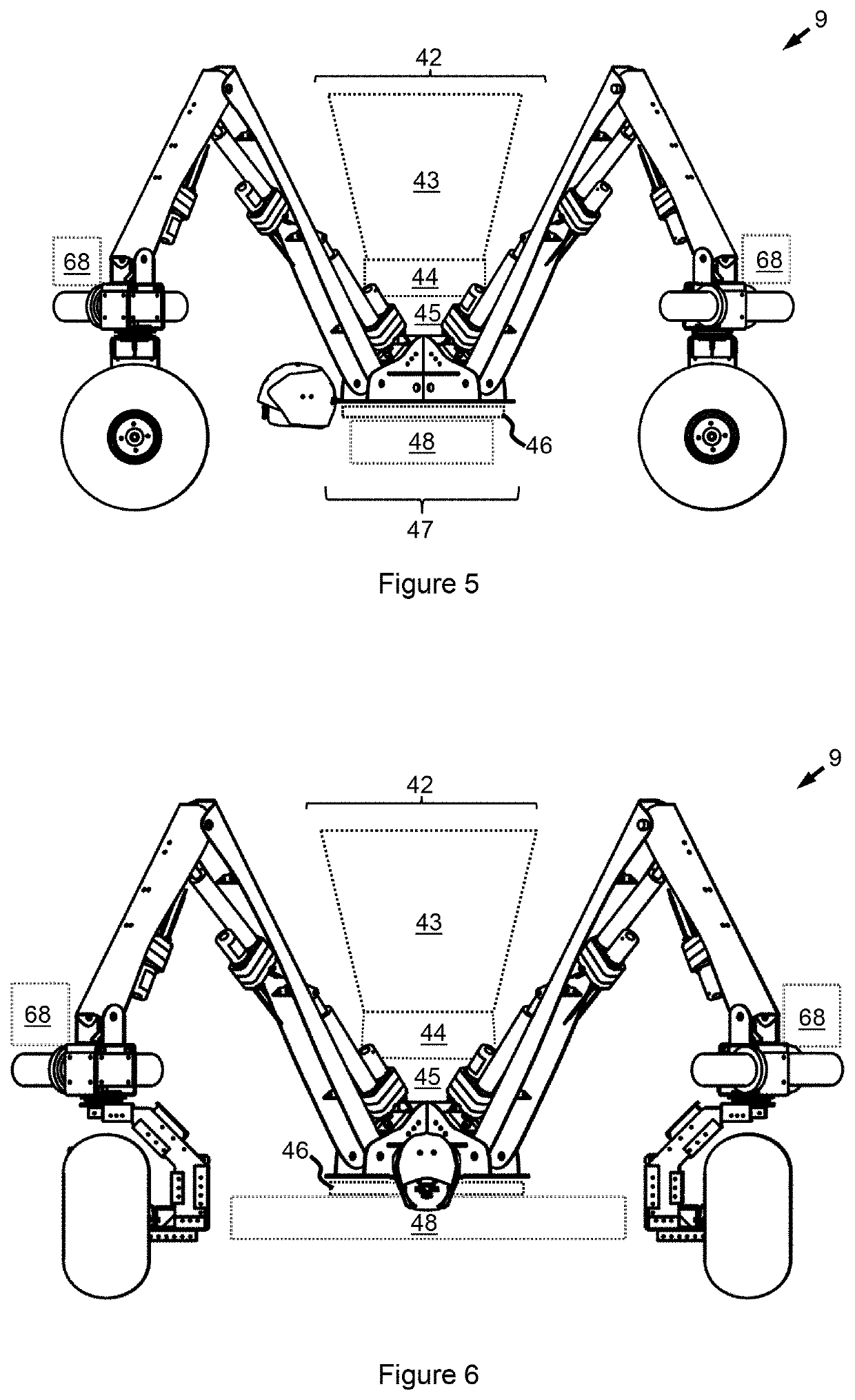Autonomous farming devices, systems and methods
a farming robot and autonomous technology, applied in the field of systems and methods, can solve the problems of inefficient power, noisy and polluting, and significant limits of agricultural work that can be performed, and achieve the effect of smoothing out the adverse effects of side-to-side rocking
- Summary
- Abstract
- Description
- Claims
- Application Information
AI Technical Summary
Benefits of technology
Problems solved by technology
Method used
Image
Examples
Embodiment Construction
[0115]FIG. 1 is a schematic view of an farming system 1 according to a first non-limiting embodiment of the present invention. Other embodiments, and variations to the system 1 and its components will be apparent to those skilled in the art.
[0116]The system 1 comprises a transportation vehicle 3, a server 4, a robot base module 6, monitoring modules 7, and two farming robot types 8, 9. Specifically, the farming robots types include a monitoring robot 8, and a tending robot 9.
[0117]A communications network 5 communicatively interconnects these components of the system 1. Whilst a single network 5 is depicted in FIG. 1, it may actually be composed of a combination of different communication technologies. Furthermore, a direct communication link between each component of the system 1 isn't always necessary: for example, in certain embodiments, the monitoring robot 8 may communicate only directly with a robot base module 6, which may relay data to other components of the system 1.
[0118]...
PUM
 Login to View More
Login to View More Abstract
Description
Claims
Application Information
 Login to View More
Login to View More - R&D
- Intellectual Property
- Life Sciences
- Materials
- Tech Scout
- Unparalleled Data Quality
- Higher Quality Content
- 60% Fewer Hallucinations
Browse by: Latest US Patents, China's latest patents, Technical Efficacy Thesaurus, Application Domain, Technology Topic, Popular Technical Reports.
© 2025 PatSnap. All rights reserved.Legal|Privacy policy|Modern Slavery Act Transparency Statement|Sitemap|About US| Contact US: help@patsnap.com



